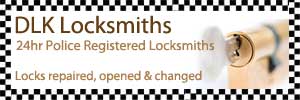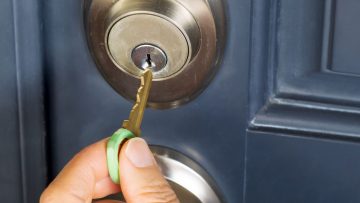European standard euro cylinder locks are a common choice for door security in the United Kingdom. They have a number of benefits.
Our locksmiths have been installing these high-quality locks for a variety of residential and commercial clients for many years. This is a quick guide for you.
Euro cylinder locks are probably the most widely used locks in the UK because of its pin tumbler construction. These use varying length pins that align with the serrated edges of the inserted key to create the correct pattern for unlocking.
The lock’s specific cross-sectional design profile is referred to as a “euro cylinder.” Because of their cylindrical barrel construction, they are simpler to repair, and replacements let you change the key for more security. A rapid changing of the key involves undoing a screw, taking out the cylinder, and replacing it with a similar-sized one.
The adaptable design of euro profile cylinder door locks allows them to be used with a wide variety of doors and keys. Because these locks may be used on both internal and external doors, they provide both home and business clients with an efficient security solution. The number of pins varies across different types of euro cylinder locks; some have five, while others have six. Selecting locks with six pins increases security in general.
uPVC doors
Aluminium doors
Wooden doors
Garage doors
Storage units
Patio and French doors
Steel doors
When some locations in factories or office buildings require more security, euro cylinder locks can be helpful. A moderately cost five-pin type should typically work in these kinds of circumstances, although it’s preferable to work closely with an experienced locksmith rather than attempting to fit one yourself.
There are several varieties of euro cylinder locks, each meeting distinct needs.
Compared to other locks, half-euro cylinders, also referred to as single-euro cylinders, are shorter in length. These are meant for places like garage doors where only one direction key access is needed.
Keys are located at both ends of double euro cylinders, also known as whole euro cylinders. They are more accessible and safe because to this design, which enables locking and opening from any side. Front and rear doors are frequently equipped with double euro cylinders.
In any emergency, thumb-turn euro cylinders allow for fast operation. You can access these locks considerably faster because all it takes to release them is a little thumb pressure. There are two types of thumb-turn euro cylinders: full models, which have a keypad and a key lock on one side, and half models, which have just a keypad.
Euro cylinder locks with anti-snap technology are made to withstand lock snapping, which is a typical way for intruders to breach locks. Along the outside casing of these locks is an incision known as a sacrificial snap line. The snap line breaks when force is applied, but the central locking mechanism holds.
In addition to anti-snap versions, euro cylinder locks with high security comprise:
Anti-Pick Locks: These locks are made to resist lock picking and make it much harder to manipulate internal pins.
Anti-Drill Locks: These are made of steel that has been particularly strengthened to thwart brute force attacks with drilling tools.
Anti-Bump Locks: These have distinct pin levels that are only reachable with particular key grooves. This stops the internal cylinder from turning when pressure is applied, preventing criminals from using bumping techniques.
The mechanism behind Euro cylinder locks consists of a set of pins, typically five or six. The upper pins are flat on both ends, uniformly sized, and fastened to springs. Conversely, the lengths of the bottom pins vary and they have tapering ends.
The different lengths of the bottom pins are represented by a unique pattern of indents on the key blade. The lower pins are pushed upward and aligned flat against the higher pins when the key is inserted.
By doing this, the door can be opened or closed by manipulating the internal bolt with the help of the cam, the projecting portion of the lock. If the key is not inserted correctly, the bottom pins will not line up with the indent pattern, which will cause the lock to become unresponsive.
Choosing a six-pin lock makes it more secure because it can withstand more picking and force.



